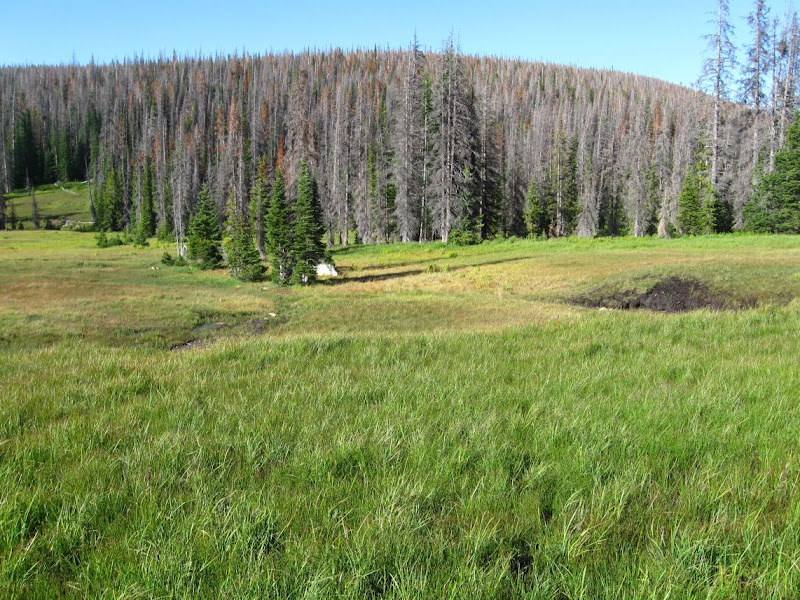
Even this wide-reaching chart apparently doesn't have room to show SAD (Sudden Aspen Death) nor the Southwestern Pinyon Pine Die-Off. The title of the paper in PNAS (2005) by Dr. Breshears et al sums it up: "Regional vegetation die-off in response to global-change-type drought."

In Colorado, spruce beetles have killed entire forests around North Park. Throughout the central Rockies, approximately 2.5 million acres have been or are being destroyed.
 White Pine is also dying throughout the West, and although those maps are still being drawn, the outlook isn't good: "We're watching the collapse of an ecosystem in less than a decade. " A view of part of the forest mapped above:
White Pine is also dying throughout the West, and although those maps are still being drawn, the outlook isn't good: "We're watching the collapse of an ecosystem in less than a decade. " A view of part of the forest mapped above: |
| From New Mexico Work |
1 comment:
Greetings Weltanschuuang!
I didn't notice that the trees are all dying until the summer of 2008 (I'm on the East Coast, in NJ). For about a year I figured it was climate change - erratic precipitation. However, in the summer of 2009, I looked around and realized that young trees being in watered in nurseries, annuals in pots, and aquatic plants, all had identical symptoms of distress, namely, foliage that lacks chlorophyll. Since then trees have gotten worse - whether young or old, irrigated or in the ground...and their bark is splitting and oozing, branches are breaking etc. - so, it's not climate, or drought. It the air - the only thing all plants have in common. As it turns out, there is a huge amount of research even in the Forest Service about air pollution and how toxic it is to trees. You'd never know it from the climate change folks though! Anyway, here's my blog about it, I'm delighted to have found yours and hope to hear from you!
Gail
http://witsendnj.blogspot.com/p/basic-premise.html
Post a Comment